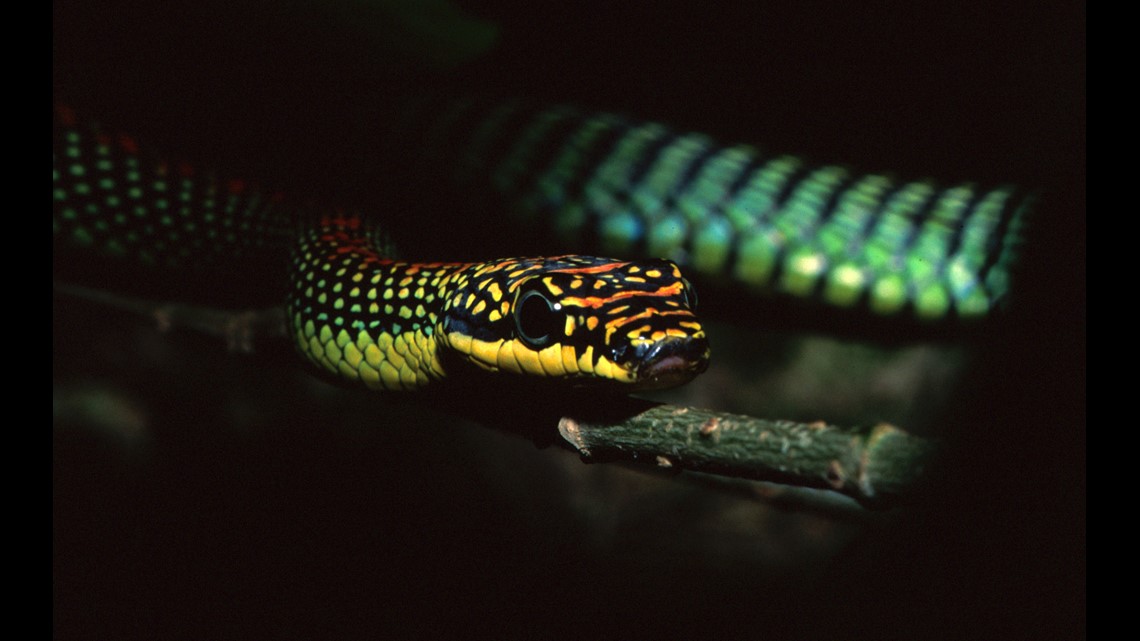WASHINGTON — Normally, when we think of snakes we envision them slithering on the ground or wrapping themselves around something. But there is one species, Chrysopelea paradisi, that can actually fly. Scientists at Virginia Tech are now gaining some insight as to how the snakes are able to glide in the air.
Known more commonly as the paradise tree snake, or paradise flying snake, these creatures are typically found in southeast Asia. It is the only known limbless vertebrae that can fly.
The study revealed that snakes use aerial undulation (waving and curving) to glide through the air. The aerial undulation allows the snake to have more stability and they are then able to travel further.


Researchers said the paradise tree snakes flatten most of their body making it almost like a wing.
Experts describe this in detail on Virginia Tech's website:
First, the snake jumps, usually by curving its body into a “J-loop” and springing up and out. As it launches, the snake reconfigures its shape, its muscles shifting to flatten its body out everywhere but the tail. The body becomes a “morphing wing” that produces lift and drag forces when air flows over it, as it accelerates downward under gravity. Socha has examined these aerodynamic properties in multiple studies. With the flattening comes undulation, as the snake sends waves down its body.
Lead author of the study, Professor Jake Socha, of the Department of Bioengineering and Mechanics, has been studying these snakes for 20 years.
"In all these years, I think I’ve seen close to 1,000 glides," Socha said on Virginia Tech's website. "It’s still amazing to see every time. Seeing it in person, there’s something a little different about it. It's shockingly still. What exactly is this animal doing? Being able to answer the questions I’ve had since I was a graduate student, many, many years later, is incredibly satisfying."
The team used a black box theater and 23 high speed cameras to capture the motion of the snakes. The cameras captured the snakes jumping from 27 feet up from an oak tree branch (hoisted by lift) and glided down an artificial tree below then on to soft foam padding to cushion their landings.
In the experiments the team was able to see that the snakes had two different wave patterns when undulating in the air. They found a large horizontal wave and a newly discovered, smaller vertical wave, which is faster than the horizontal one.
"This is really, really freaky," Socha said.
Experts said double waves have only been discovered in one other snake, a sidewinder, but its waves go at the same frequency. By the way, sidewinder snakes can travel up to 18 miles per hour.

